Non-renewable energy production
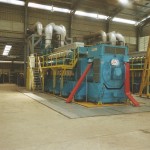
Non-renewable energy sources are chiefly fossil fuels such as coal, diesel, oil and gas. They provide most of Cambodia’s locally-produced electrical supply – in 2011 diesel and heavy fuel oil generators provided 89% of local electricity generation. ss='cambodia-color'>...
Science and technology education and promotion

Cambodia recognizes the important role of science and technology in the 21st century and aims to transform and integrate technology into its human resources through the education sector. Various policies and strategies are implemented to achieve the goal such as Policy guidelines for New Generation ss='cambodia-color'>...
Disasters
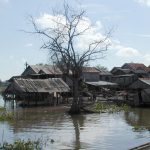
StormS, flooding and drought are the diSaSterS that affect the largeSt number of people in Cambodia, and they alSo bring the higheSt coSt. Climate change iS likely to make thingS worSe, with drier dry SeaSonS predicted and more rainfall and violent StormS in the wet SS='cambodia-color'>...
Social development
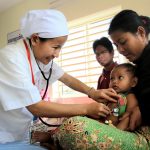
A trained medical staff listens to the heartbeat of an infant at 16 Makara hospital in Preah Vihear, Cambodia. Photo by The World Bank, taken on 30 January 2013. Licensed under CC BY-NC-ND 2.0.social development addresses profound social problems,103 especially poverty, unemployment and social exclusion, ss='cambodia-color'>...
Science and technology policy and administration
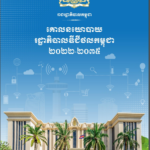
Cambodia has the ambition to transform and digitalize the government system and its economy. The overarching determination comes after the country’s ambitious economic goal of 2050, the readiness to keep up with the region’s science and technology development, and the global megatrend, the fourth industrial ss='cambodia-color'>...
Infrastructure
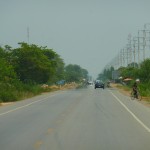
A national road in Cambodia. Photo by Pat Scullion, taken on 2 April 2010 under CC BY-NC-ND 2.0InfraStructure deScribeS the built aSSetS that allow a country to function, Such aS roadS, railwayS, portS, airportS, communication SyStemS, electricity and drinking water diStribution networkS. The MiniStry of SS='cambodia-color'>...
Multilateral development assistance
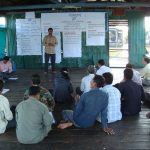
Mr Il Oeur, director of Analysing Development Issues Centre (ADIC), a domestic NGO and WorldFish partner in Cambodia, leads a local dialogue session. Photo by WorldFish, taken on 27 June 2013. Licensed under CC BY-NC-ND 2.0Multilateral aid is funding that is funneled between more than ss='cambodia-color'>...
Japanese aid
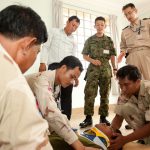
Japanese military members observe as Cambodian sailors attach a neck brace to a patient during a Pacific Partnership knowledge exchange in sihanoukville, Cambodia. Photo by U.s. Pacific Fleet, taken on 21 June 2014. Licensed under CC BY-NC 2.0Japan, through its official development branch called Japan ss='cambodia-color'>...
Environment and natural resources
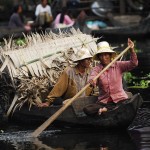
Around three quarters of Cambodia’s population depend on agriculture, forest products and fisheries for their livelihoods, so the management of the environment and natural resources is of great importance. Deforestation has occurred on a large scale. Cambodia lost six percent of its remaining primary forest ss='cambodia-color'>...
Forest protection NGOs
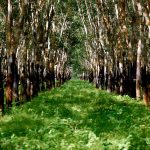
The protection of Cambodian forests is primarily the responsibility of the Ministry of Agriculture, Forests and Fisheries (MAFF) and the Ministry of Environment. There are, however, many non-governmental organizations (NGOs) working in the area, from United Nations (UN) agencies and other global bodies to locally-registered ss='cambodia-color'>...
Civil society

The launch event of a project improving the delivery of public services through ICT in svay Rieng province, Cambodia. Photo by the ODC team, taken on 28 June 2017. Licensed under a CC BY-sA 4.0.Civil society, representing the interests of ordinary citizens, is the part of ss='cambodia-color'>...
Banking and financial services policy and regulation
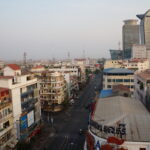
Political stability and economic growth of all sectors have played vital role in building the public and foreign investors’ confidence and maintaining the safety and soundness of banking system in Cambodia. The banking sector continues to have substantial growth as it shares 82.2% in the ss='cambodia-color'>...
Air pollution
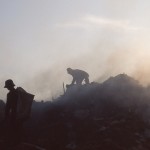
The smoke and stench blow into the air in Phnom Penh’s huge landfill. Photo by Alan Morgan, taken on 17 september 2011. Licensed under CC BY-NC-ND 2.0Air pollution originates mainly from the burning of fuels such as petroleum, diesel and coal in the transport, household, ss='cambodia-color'>...
Forest protection support
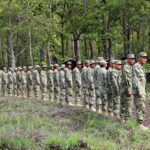
Cambodia is struggling to safeguard its forests while preserving economic growth since many people make a living via farming, logging, and other activities that might lead to deforestation. Almost 80% of Cambodians living in rural regions rely on forests for survival. On the other hand, ss='cambodia-color'>...
Urban administration and development
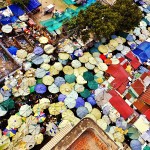
Bird eye view of a local market in Phnom Penh. Photo by Roberto Trombetta, taken on 8 May 2015. Photo licensed under Creative Commons Attribution-NonCommercial 2.0 GenericThe development and administration of Cambodia’s urban areas has struggled to keep pace with urban population growth. For example, ss='cambodia-color'>...
Trade policy and regulation
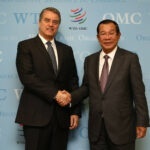
Cambodian Prime Minister Hun sen were at the Aid for Trade Global Review 2019. Photo by World Trade Organization (WTO), taken on 03 July 2019. Licensed under CC BY-sA 2.0.International trade plays an essential role in improving Cambodia’s growth, employment and business opportunities. Trade policy ss='cambodia-color'>...
Salt
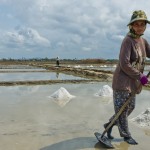
Woman working in the salt fields in Kampot. Photo by douglasjonesjr, taken on 28 March 2014. Licensed under CC BY 2.0.salt is produced in Kampot and Kep provinces, where seawater is allowed into salt evaporation ponds As the water evaporates, salt crystals are left behind ss='cambodia-color'>...
Water policy and administration

In Cambodia, alternate periods of drought and heavy rains bring challenges for water management. The current trends show increasing annual rainfall and temperature throughout Cambodia, with a likelihood that both flooding and droughts will increase in frequency, severity and duration633. Water management involves issues of ss='cambodia-color'>...
Trade
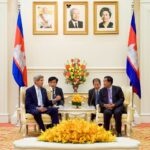
U.S. Secretary of State John Kerry and Cambodian Prime MiniSter Hun Sen at a bilateral meeting. Photo by U.S. EmbaSSy Phnom Penh, taken on 06 January 2016. LicenSed under CC BY-ND 2.0.Cambodia iS a lower middle-income country with a faSt-growing economy that haS SuStained a SS='cambodia-color'>...
Adaptation
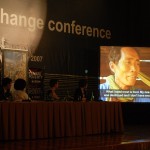
UN’s Bali Climate Change Conference. Photo by Oxfam International, taken on 4 December 2007. Licensed under CC BY-NC-ND 2.0Climate change is a continuing problem. In southeast Asia, Cambodia is one of the countries that is most affected and underprepared. As it is a developing country, ss='cambodia-color'>...



